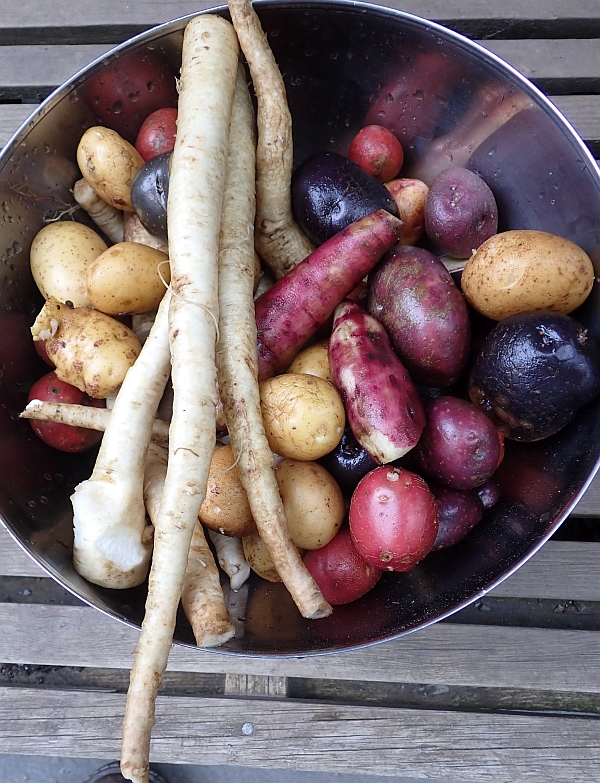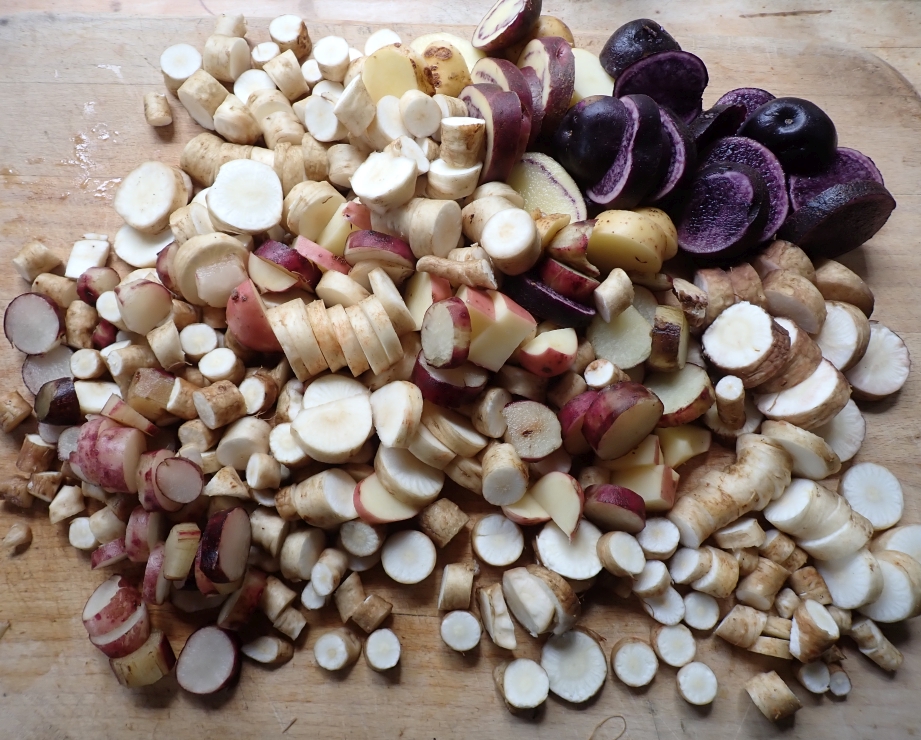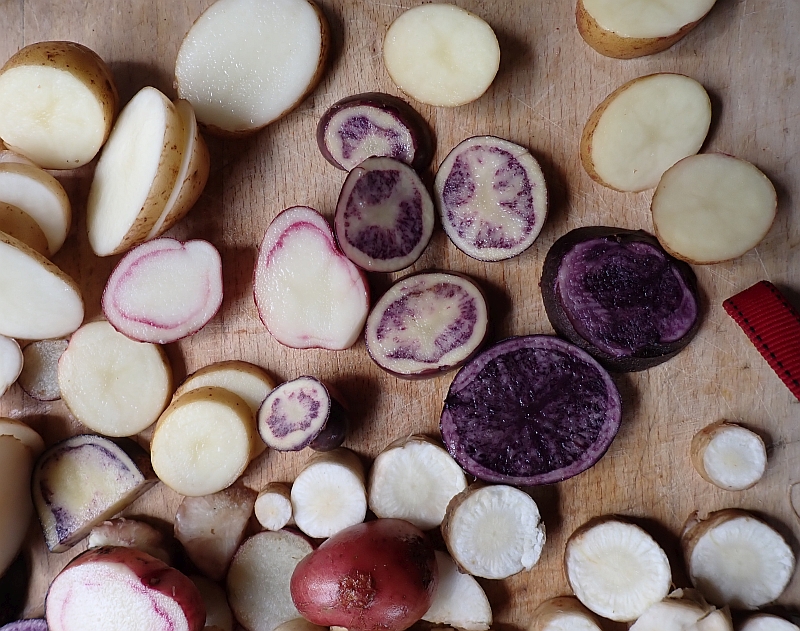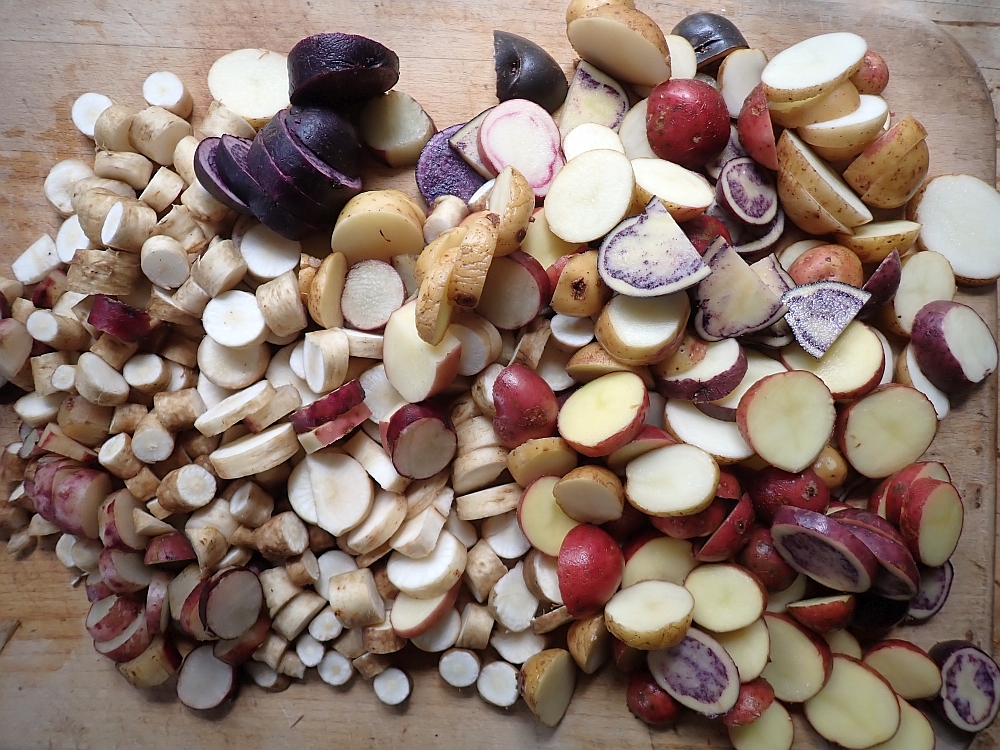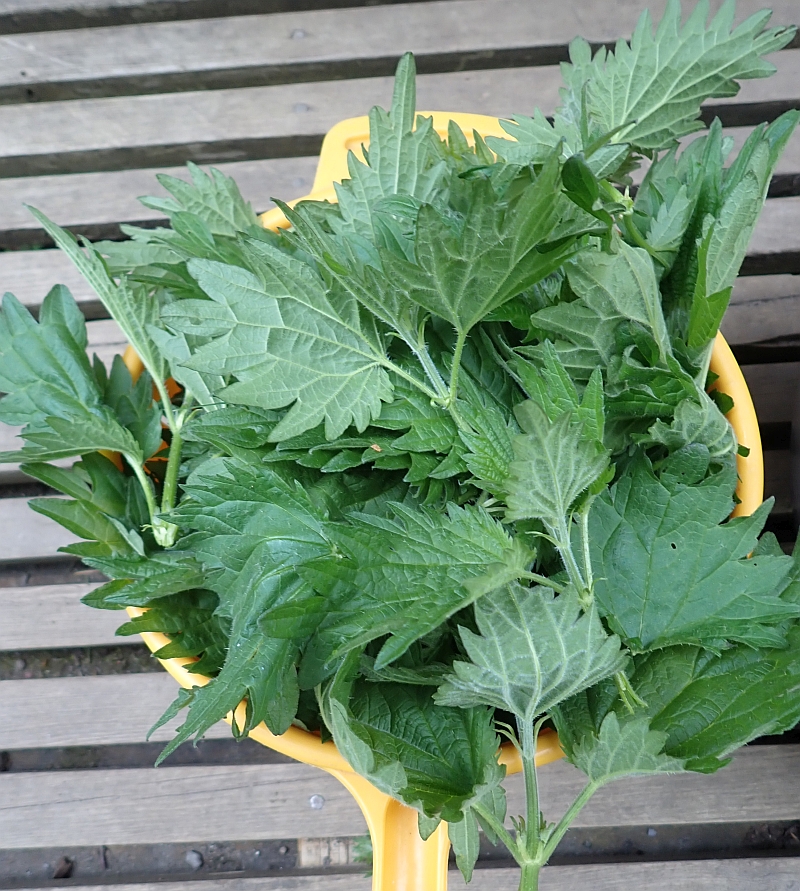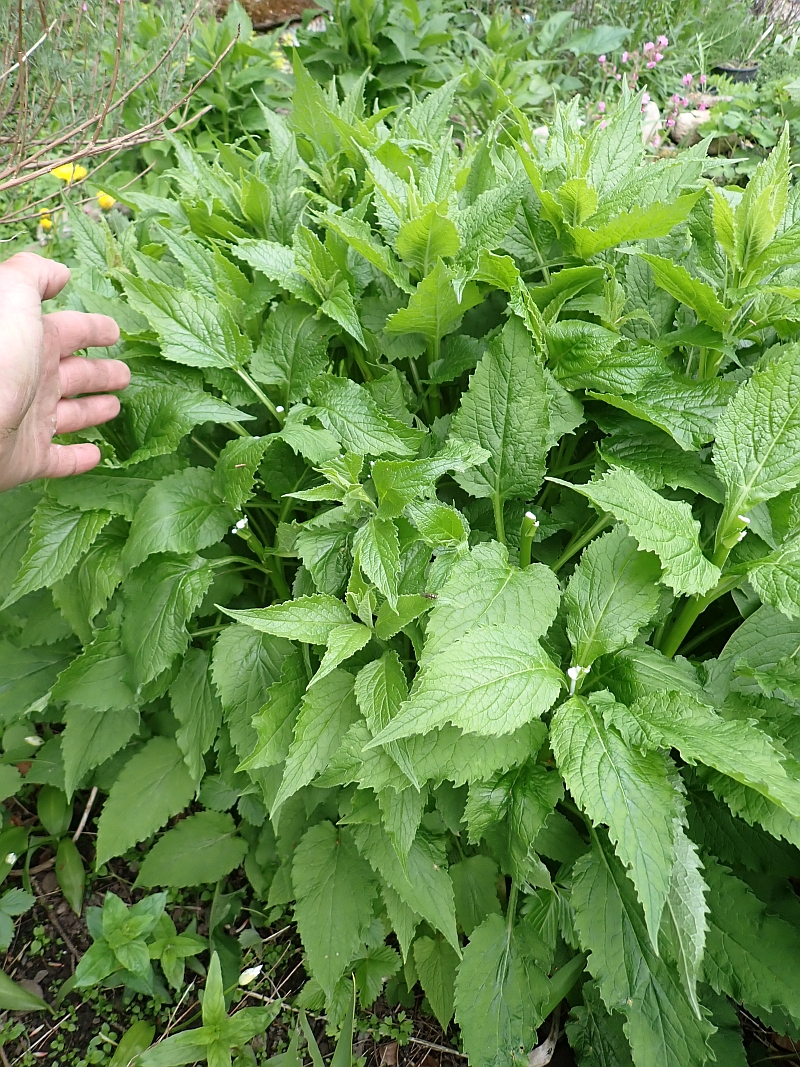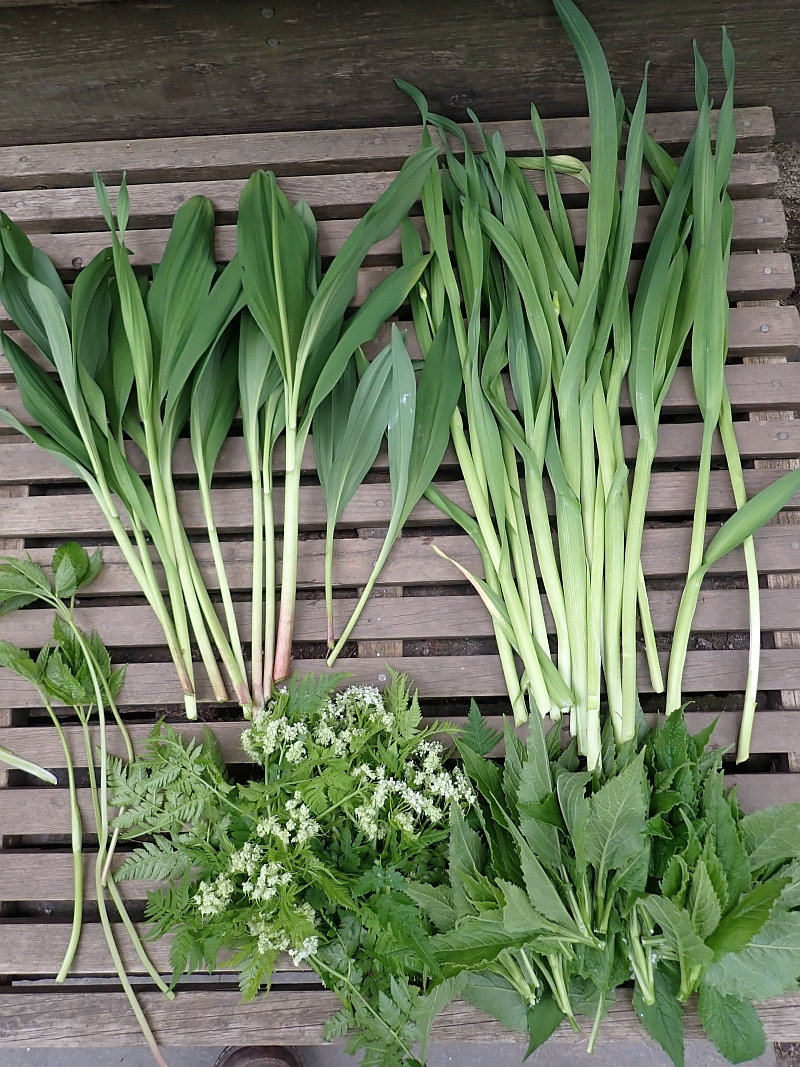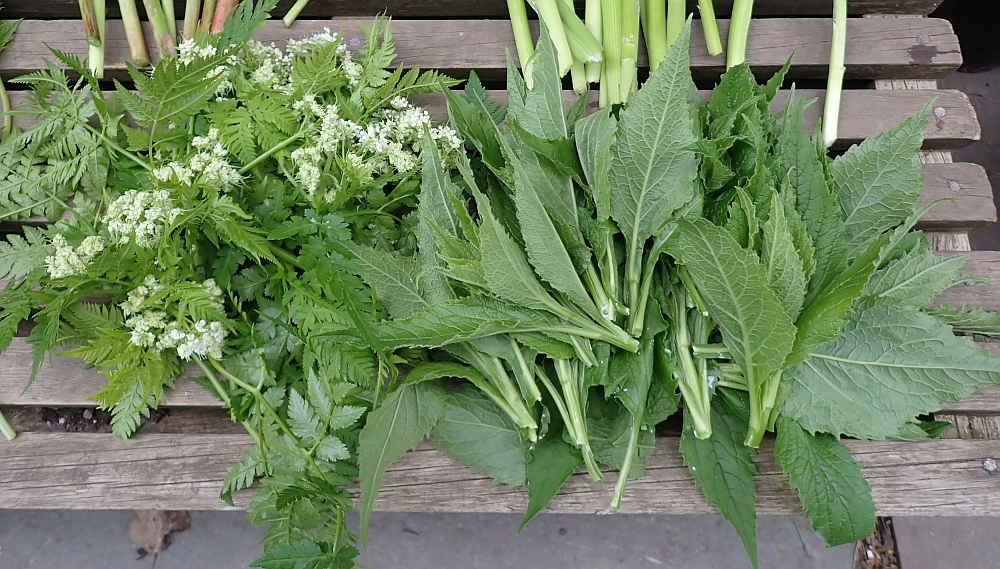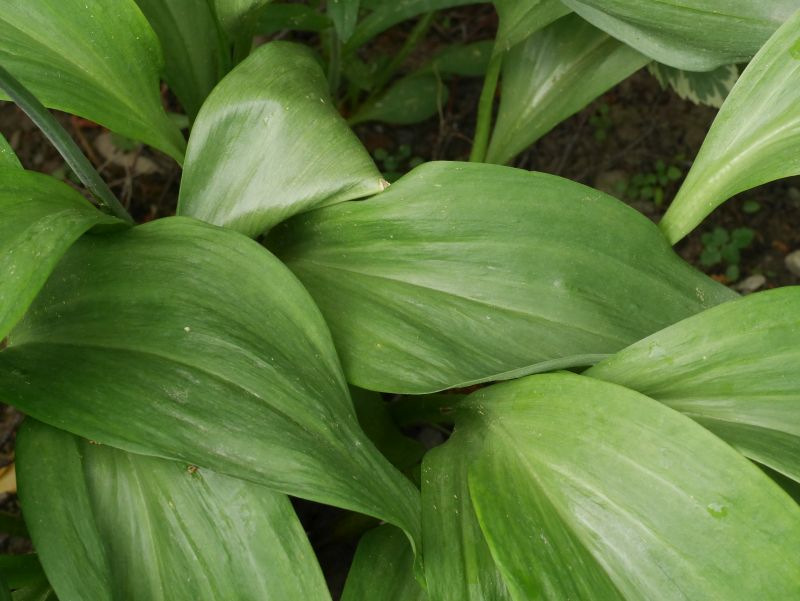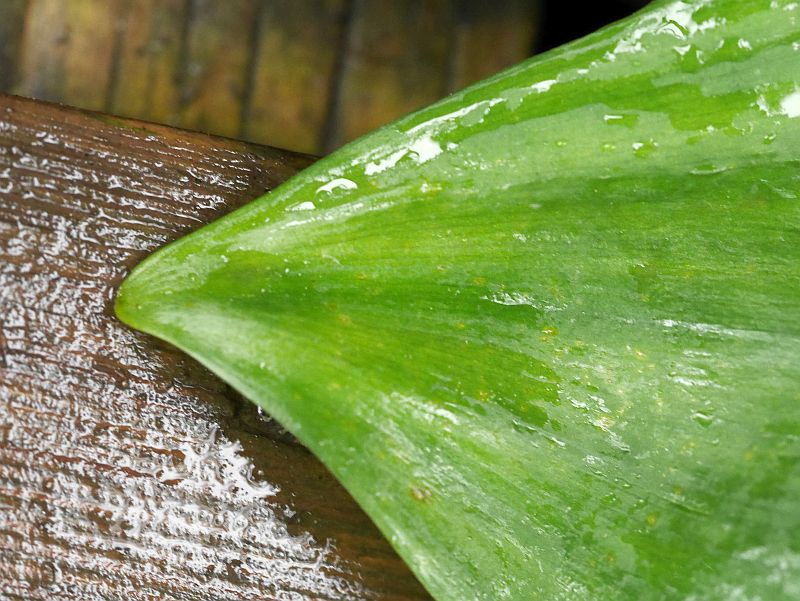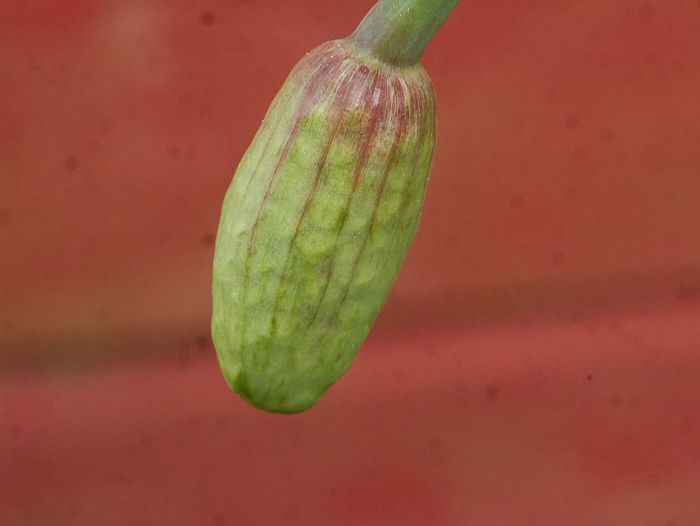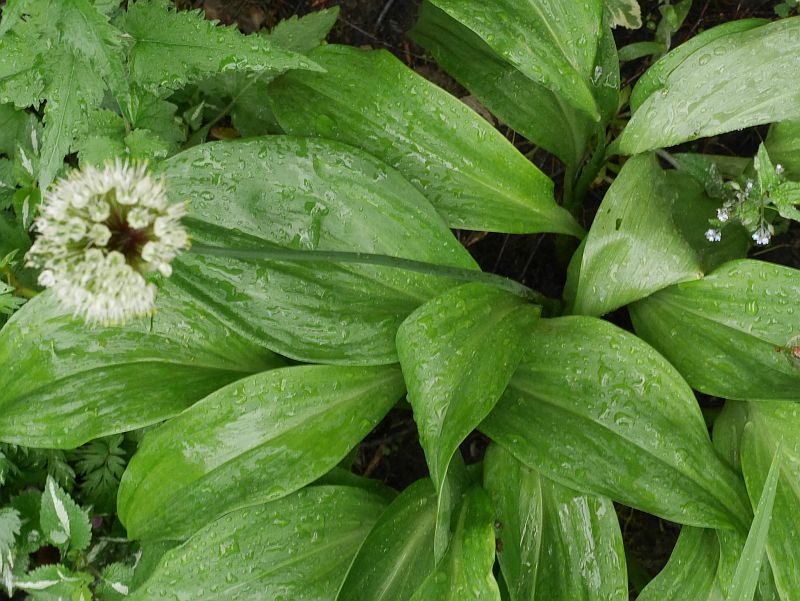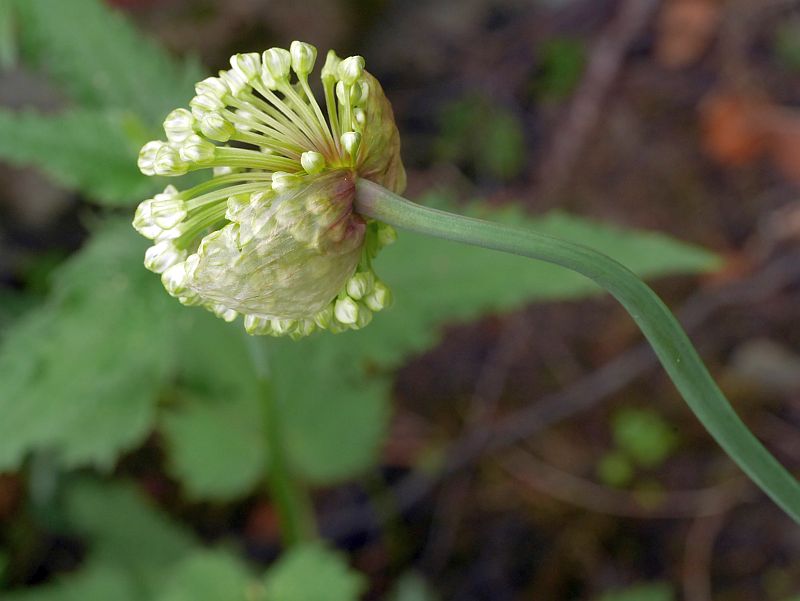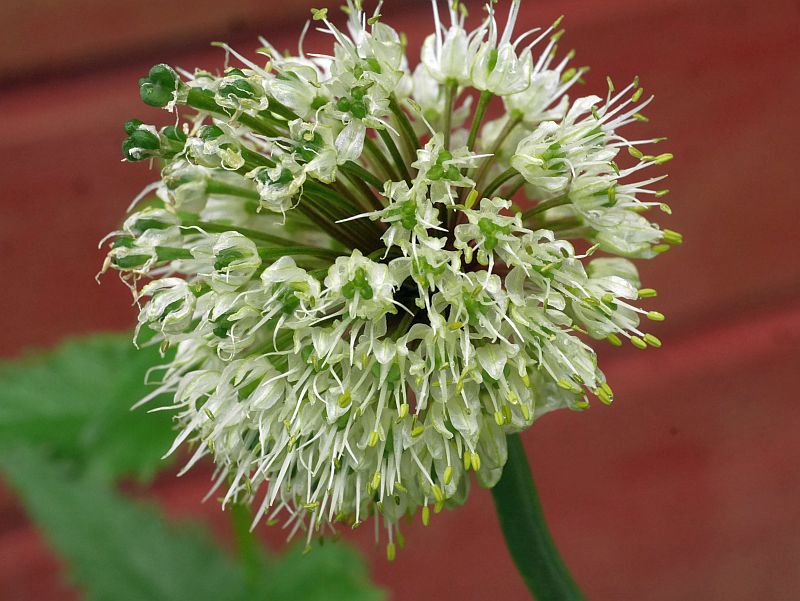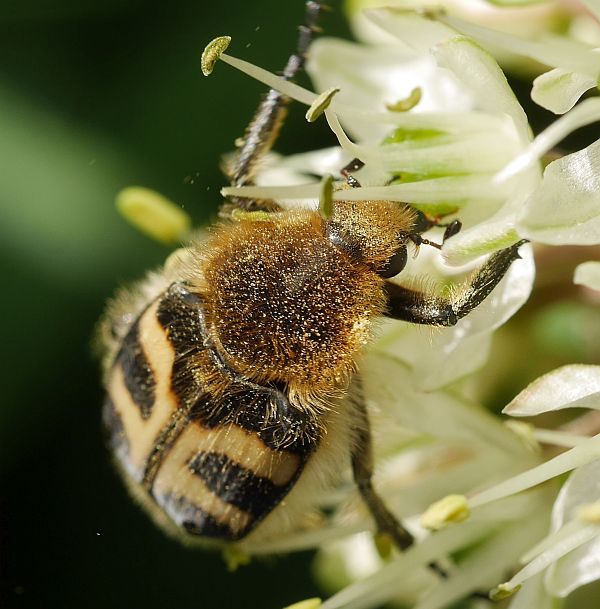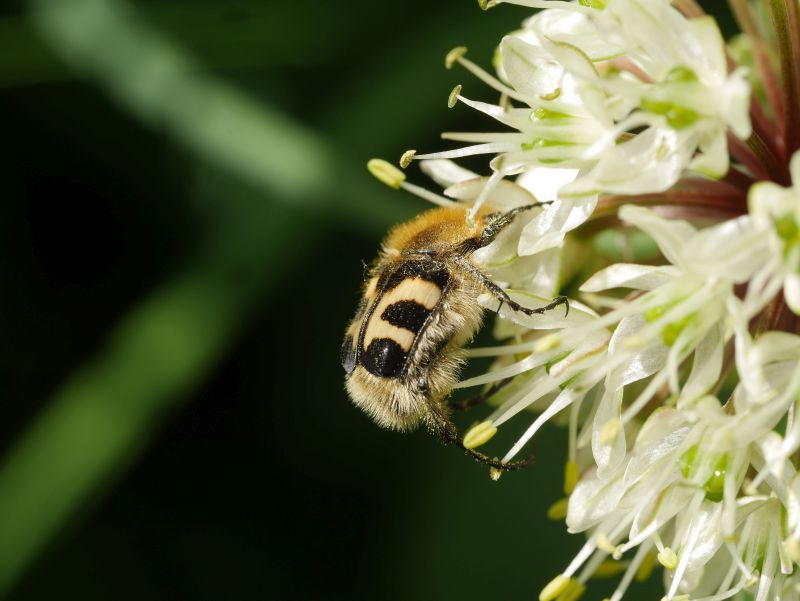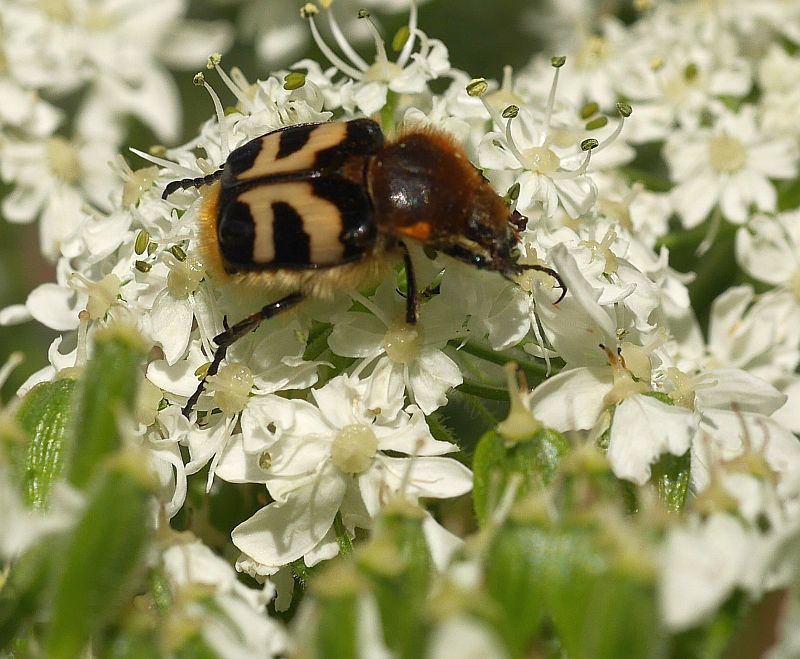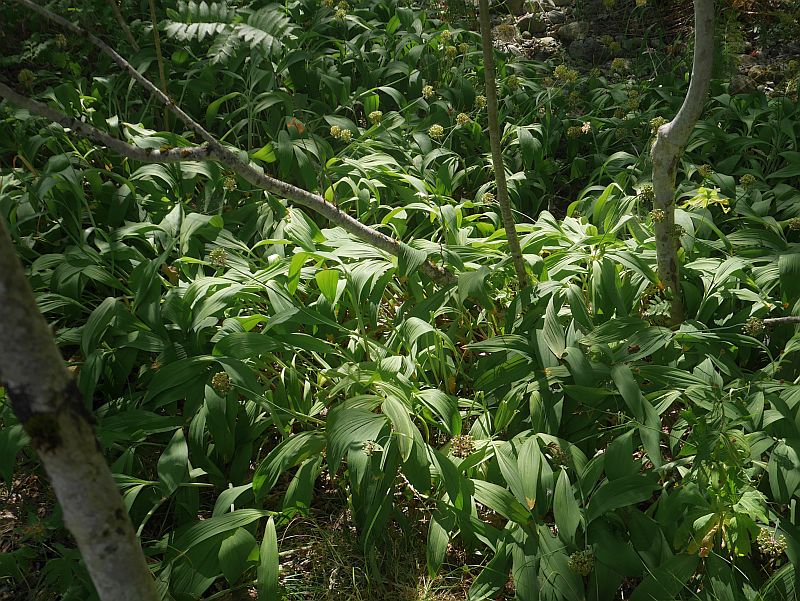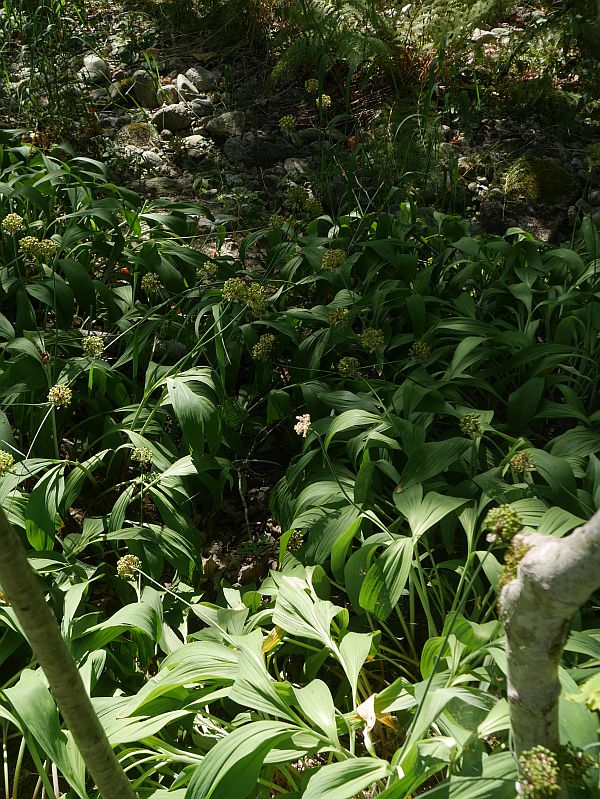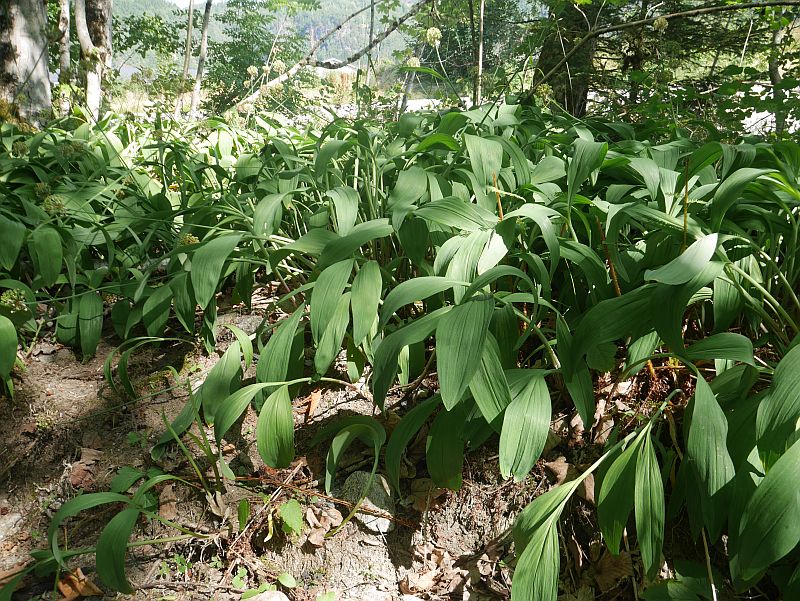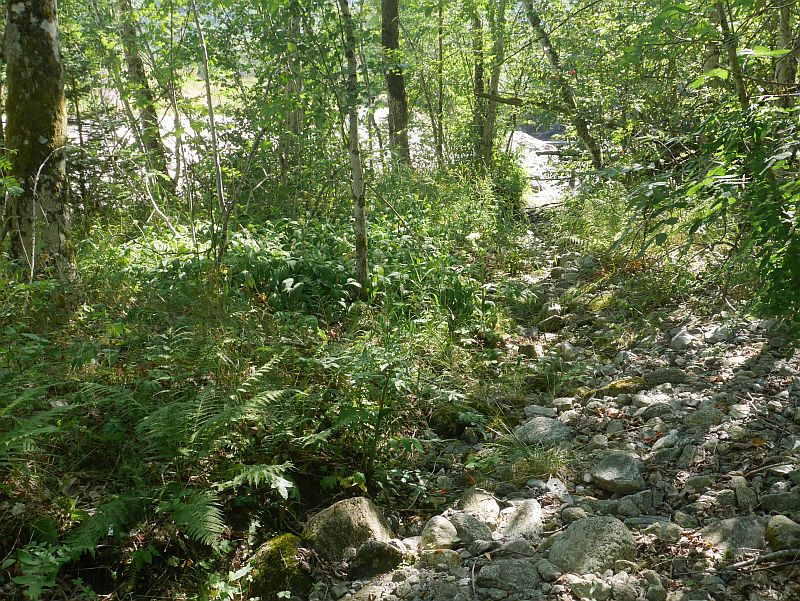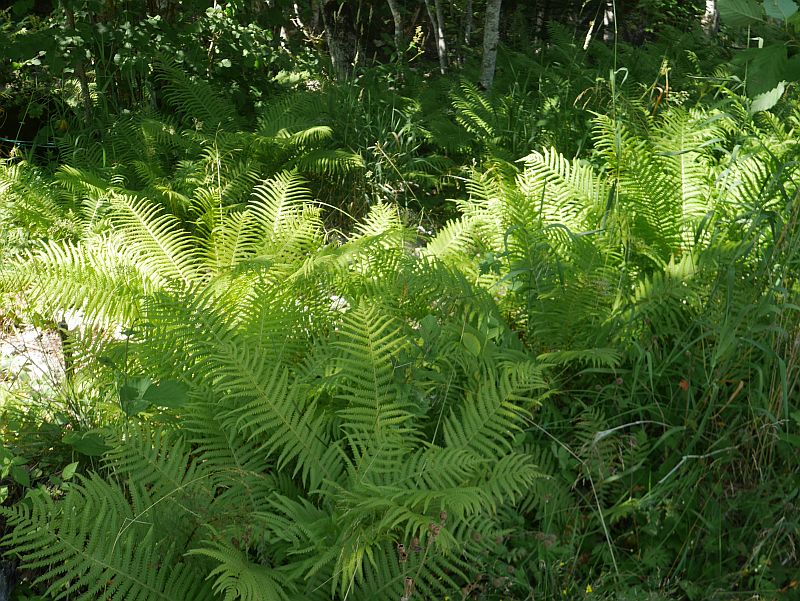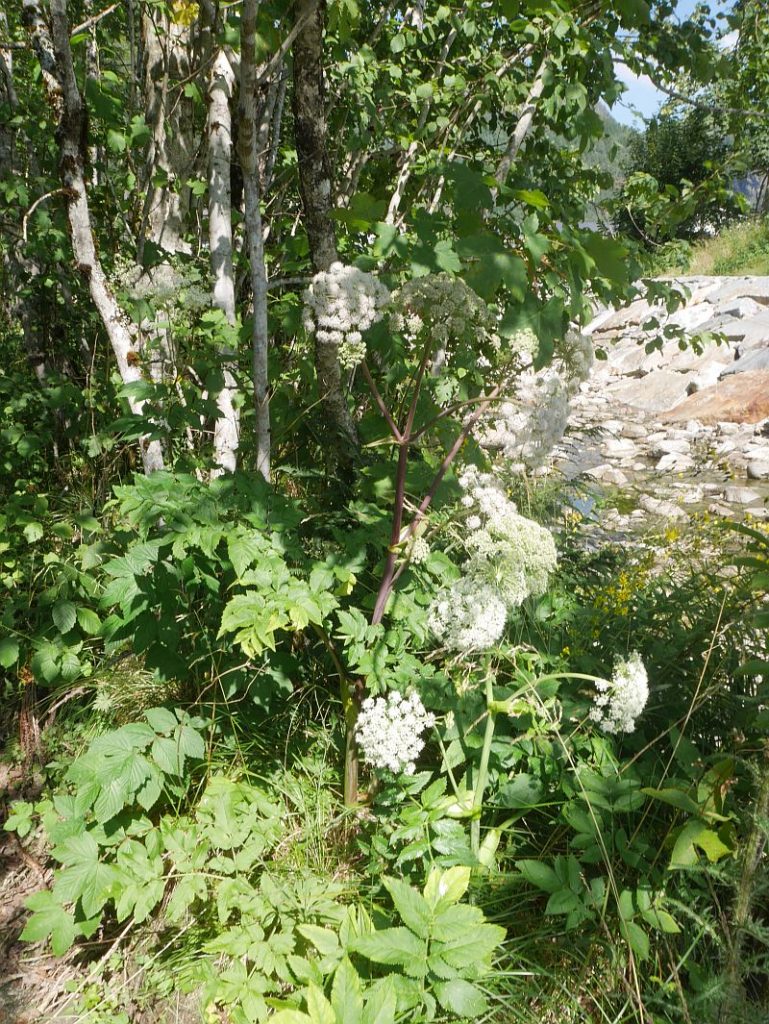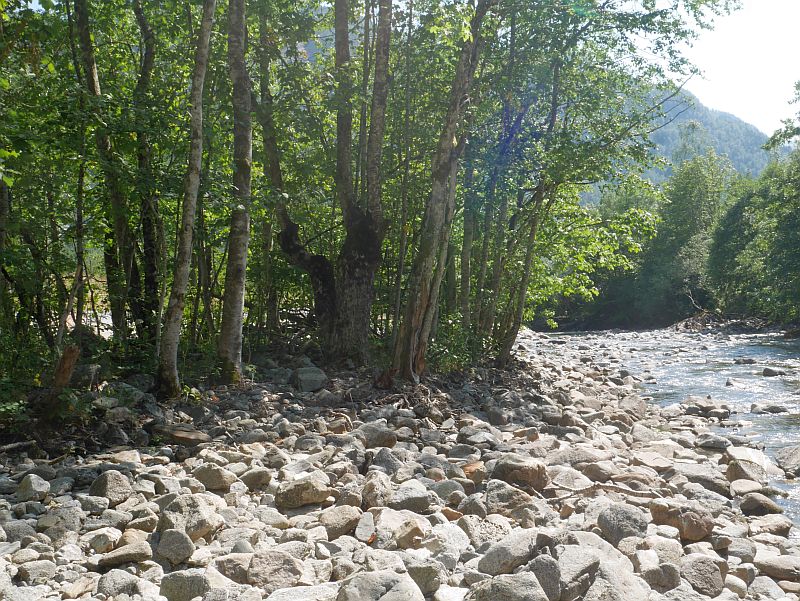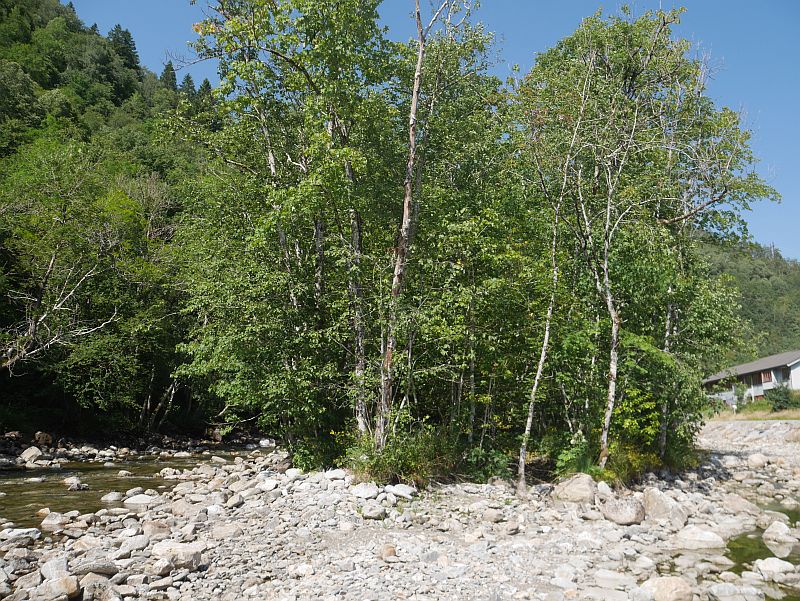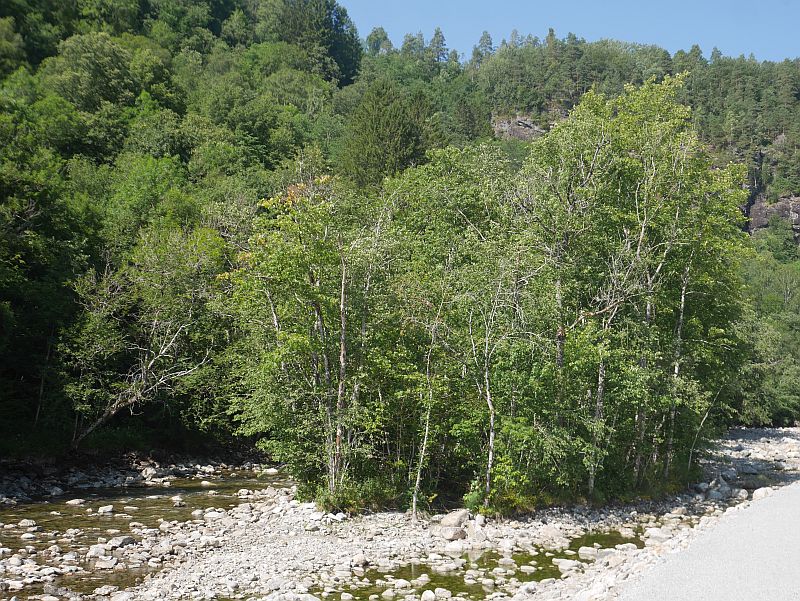No, I’m not vegan and have never been, I’ve been lactovegetarian with the occasional wild fish over 40 years. We always have some Norwegian dried cod (baccalao) at the ready in our cool larder. The usual way to make the dish baccalao here is to hydrate the fish for a couple of days and then layer potatoes, bulb onions, fish, tomatoes, garlic with olive oil, pepper and chili in large saucepan. I’ve always added seasonal greens too and often use green onions of various types instead of bulb onion.
Last night, we used the last of the potatoes from the cellar and as there weren’t many also used root chicory (di Sancino: an edible rooted variety that produces well here) and the last yacon roots, all still in perfect condition kept in the cellar in dryish leaves all winter! We also used a good bunch of nettles, tops of giant bellflower (Campanula latifolia) and sweet cicely (Myrrhis odorata) tops including the flowers. For the onions, sand leek (Allium scorodoprasum) and victory onion (Allium victorialis) were in perfect condition (beginning to flower).
The verdict on our first bitter baccalao? Delicious, but probably not for everyone!
Tag Archives: Victory Onion
Allium ulleungense: a new vigorous edimental
In 2019, a very interesting paper was published giving a very good case for splitting the geographically widespread Allium victorialis species complex, at the same time describing a new endemic species to the island Ulleung between Korea and Japan. The paper also mentions that the species is “Rare in natural habitats, but widely cultivated in Korea as an edible plant named ‘Myeong-i-na-mul’ or ‘Sanmaneul.’”
Reference: “Allium ulleungense (Amaryllidaceae), a new species endemic to Ulleungdo Island, Korea” by Hyeok-Jae Choi, Sungyu Yang, Jong-Cheol Yang and Nikolai Friesen in the Korean Journal of Plant Taxonomy
Those who follow my blog and FB posts will maybe remember my article on the Giant Ulleung Celery, Dystaenia takesimana, another edible endemic to this island which I’m growing in my garden from two sources, one of which is the Gothenburg Botanical Gardens in Sweden (see http://www.edimentals.com/blog/?p=24998)
Figure 4 in the paper (below) shows a map of Allium subg. Anguinum showing the disjunct distribution of what was earlier classified as Allium victorialis, now split into Allium victorialis, microdictyon, ochotense and the new species Allium ulleungense together with other species in the section like Allium ovalifolium.
The article has a useful table and pictures showing the differences between microdictyon, ochotense and ulleungense.
I have about 10 different “Allium victorialis” accessions in my garden both from Norway, Kola (Russia), the Alps and the Far East. Having read the paper which documents that the Ulleung victory onion has both broader and longer leaves I noticed that one of my plants had very different and broader leaves than my other ones and was particularly vigorous. I had lost the label of this plant. Johan Nilson of the Gothenburg Botanical Garden wrote on the Alliorum forum thread about this species: “I believe we might grow this” (they had had an expedition to the island some years ago and this onion and Dystaenia had been collected). Johan had given me various edibles on a visit to Gothenburg a few years ago and I wonder if he might have given me this plant?
Anyway, the morphology of this plant fits well to the newly described species with several leaves 12 cm wide (ochotense reaches 10 cm and microdictyon 6 cm); leaves up to 26-27 cm long (the other two species reach 25 and 21.5cm) and yesterday I measured the white tepals which are slightly longer in the new species and this also matched with 7mm length (the others reaching 6.5). The rounded leaf apex of my plant also matches ulleungdense, acute in the other two species (and other Japanese accessions I have in my garden). I now need to propagate it and plant it in the Allium garden Chicago at the Ringve Botanical Garden.
Bee beetle
One of my favourite insects is the bee beetle / humlebille (Trichius fasciatus). This morning I saw it on one of my favourite onions victory onion / seiersløk (this one is Allium ochotense; the East Asian species – recently separated out as a species). Later I filmed it also on a hogweed (Heracleum spp.).
Unintentional presents
Yesterday was my birthday and the best presents were all unintended as birthday presents:
1. Allium victorialis from a large stand that has naturalised from a farm garden in Nordland county, Norway to be offered to various members of KVANN (Norwegian Seed Savers) when I get time (From Inger Elvebakk, who also took the picture):
2. A new sea kale / strandkål (Crambe maritima) accession from a KVANN member, from a wild population
3. Decorah Posten took over a month to get here, but it arrived too on my birthday (see https://en.wikipedia.org/wiki/Decorah_Posten); more about this another time!
Victory falafels
Falafels can be home grown over most of Norway and if we are serious about climate change should become standar fare in kitchens, restaurants and supermarkets throughout the country. Dig for VICTORY against climate change!
The ingredients:
Broad beans / fava beans (bondebønner); grown in Malvik and stored dried
Victory onion (seiersløk) grows particularly well in the arctic (or replace with garlic or ramsons)
Golpar (spice from ground seed of any member of the Heracleum genus, including invasive Tromsøpalme, Heracleum persicum)
Barley flour (bygg) – I used100% whole grain
Eggs to bind
Fry in oil (sorry, I used imported olive oil)
(Optional: house grown chilis)
Decoration: Oxalis triangularis


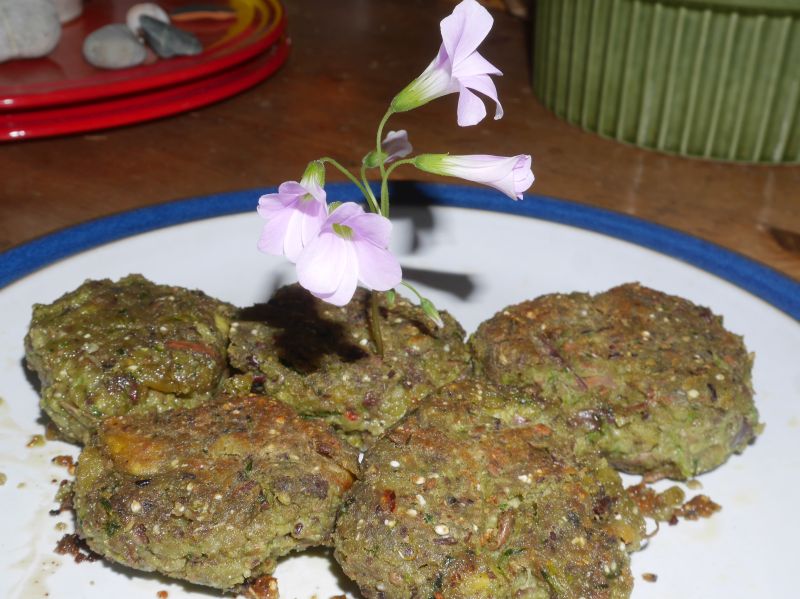
Mass Victory Onion Germination
Mass germination around one of my victory onions /seiersløk (Allium victorialis). I’m not sure where this accession originates.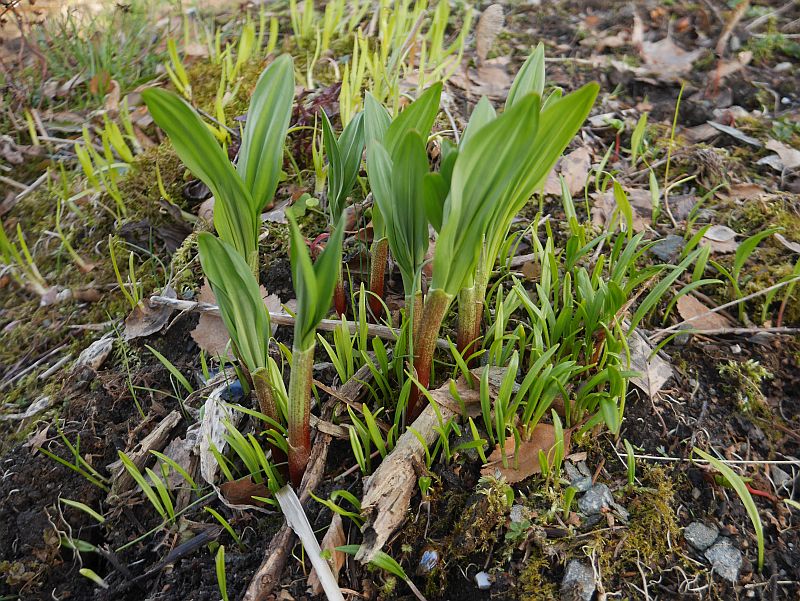
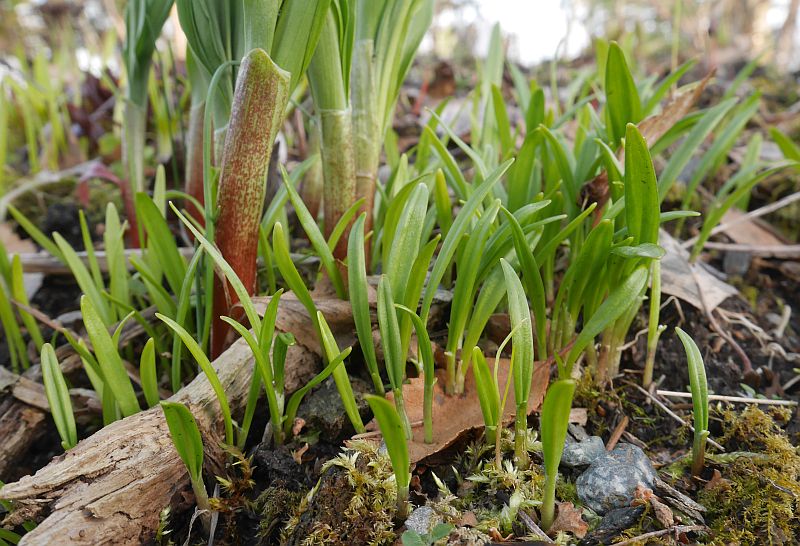
9th April veggies
Lots of Hablitzia (stjernemelde), ground elder (skvallerkål), Svenskelauk (a form of Allium fistulosum), sweet cicely (spansk kjørvel), dandelion (løvetann), day lily shoots (daglilje), blanched horseradish shoots (pepperrot) and a variety of Allium victorialis (victory onion, seiersløk) which is the earliest form I grow along with one from the Kola peninsular in northern Russia; other varieties have hardly grown yet!
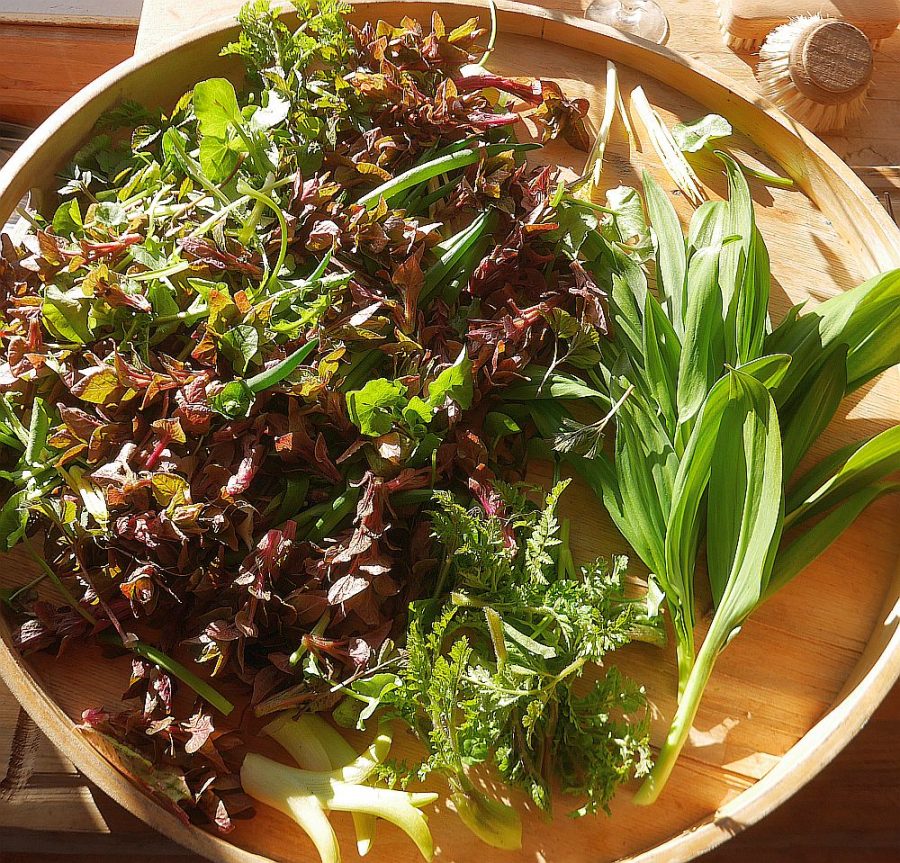
Status of the Granvin victory onion location
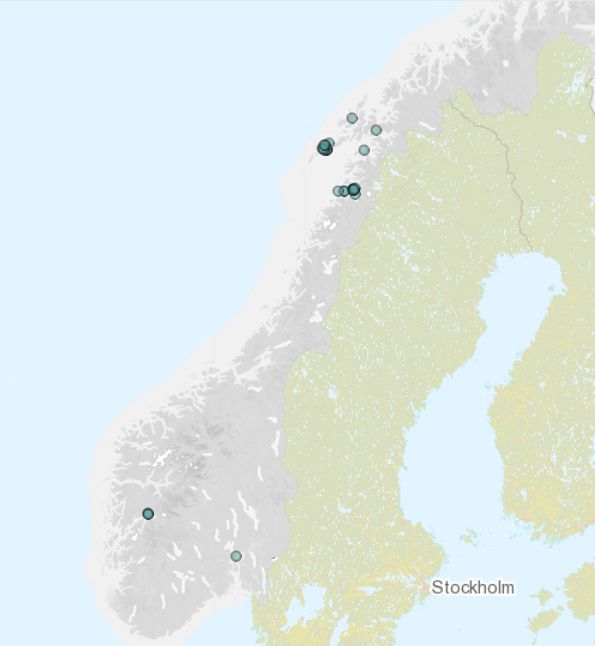
In late October 2014, there was a major flood in western Norway (https://nn.wikipedia.org/wiki/Oktoberflaumen_i_2014) which caused a lot of damage including in Granvin. Over 200mm rain was recorded over 3 days in several places and up to 330mm! Although not a record, it had already rained a lot for most of October and the ground was already saturated when the worst rain happened…leading to a totally unexpected extreme event.
I heard rumours that the victory onion location had been severely impacted by this event, so when we drove past Granvin on the way back from the Nordic Permaculture Festival in Jondal, I took the opportunity to visit the location! This confirmed that the site is much reduced and there is visible signs of erosion including a dried up channel through the middle of the wooded island where the onion is found (the river was very low due to the drought). In addition, I was surprised to find that a path had been constructed between the river and the school. This is part of a major civil engineering work in Granvin to protect the low lying inhabited areas from flooding (see https://www.nve.no/nytt-fra-nve/nyheter-skred-og-vassdrag/granvin-har-fatt-betre-tryggleik-mot-flaum )
A video showing the completed works https://www.youtube.com/watch?v=Keg-BSrAi94 shows aerial views of “victory onion island” between 0:56 – 1:24!
These works may lead to further erosion and destruction of the island….
Seeds were actually already ripe due to the hot summer and I therefore collected seed to safeguard the Granvin onion to be offered to Norwegian Seed Savers (KVANN) through our autumn catalogue which will be produced in October!
From my friend Geir Flatabø: “Jaunssen Gjestgjevarstad (Jaunssen Guest House) in Granvin has begun to harvest / use the onion, and makes pesto served to guests, with good feedback.”
Other relevant articles:
Hagetidend (Norwegian gardening magazine) profile http://www.edimentals.com/blog/wp-content/uploads/2018/07/6_Seiersl%C3%B8k_fra_Vestv%C3%A5g%C3%B8y.pdf
A report from my 2009 “onion safari” to Lofoten, Tromsø and Granvin can be found here (in Norwegian with English comments) http://www.edimentals.com/blog/?p=18527 (some of this material ended up in my book Around the World in 80 plants))
Norwegian report on my 2009 Victory Onion safari to North Norway and Granvin!
See also:
Artikler om grønnsaksarven fra Hagetidend
English: In 2011, I wrote a series of one page articles about Norwegian heirloom vegetables in Norsk Hagetidend (the magazine of the Norwegian Horticultural Society) in Norwegian. The complete series can be found below.
- Fjellmandel og takløk (Mandel potato and the roof onions of Gudbrandsdal)
2. Aleksandra hvitløk (Garlic Aleksandra)
3. Hagemelde “Backlund-Bly” fra USA (Garden orach Backlund-Bly from Seed Savers Exchange i USA)
4. Stjernemelde (Caucasian spinach, Hablitzia tamnoides)
5. Vossakvann (Voss Angelica)
6. Seiersløk fra Lofoten (Victory onion, Allium victorialis from Lofoten)
7. Luftløk fra Udøy (Walking onion, Allium x proliferum from the island Udøy and Catawissa onion)
8. Jordskokk fra Ontario (Jerusalem artichoke from Ontario that travelled the world)
9. Maries høje ært (Marie’s pea…from Norway to Denmark and back)
10. Tante Cis tomat (Tante Cis or Ansofs Gule tomat)

